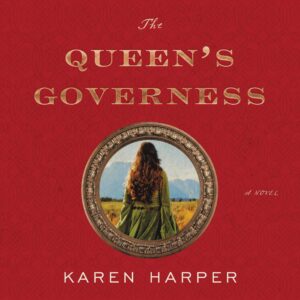
Finding Kat Ashley by Karen Harper
I have been fascinated by the Tudors for years: Elizabeth and her mother Anne are the two most fascinating women I have ever researched, read and written about. As a multi-published historical novelist, I am always looking for new windows into their much-examined lives. I have approached them through a historical novel, The Last Boleyn (focusing on Anne and her sister Mary—published twenty years before Gregory’s The Other Boleyn Girl) and a nine-book The Queen Elizabeth I Mystery Series. But when I realized that, as far as I could tell, no one had yet written an Anne/Elizabeth novel through the viewpoint of Katherine Champernowne Ashley, Elizabeth’s governess and “foster mother,” I realized I had found a real gem of a central character.
Kat Ashley’s time at the Tudor court spans the early years of Anne Boleyn’s premarital residency as “The Lady” through the early years of Elizabeth’s reign. Those years, approximately 1528 – 1565, cover my favorite Tudor years, so deciding to use Kat as the viewpoint character was a real blessing—and then became a real challenge.
First of all, Tudor research, as much as I love it, it always a bit daunting. Dates often vary, consistent spellings are non-existent, and, even though I try to read primary sources, comments on events can be different. I ran into real confusion in trying to discover information about Kat’s early years, because “experts” contradict each other on which family she came from in Devon. After examining numerous family trees, I decided she could not be from the Champernowne branch many sources claim because she wrote a letter to Thomas Cromwell in 1536 which indicated her father was alive—and that did not jive with much of the research. So I linked her to that family, but did not claim they were her own.
Another mystery—how did a woman from rural, distant Devon get to court, get a good education, and why was she seemingly tied to Thomas Cromwell at first? [Sidebar here: I was thrilled to see that Hilary Mantel’s Wolf Hall presents Cromwell much as I interpret him, as he is a key character in this novel.] Research on Cromwell shows that he did visit rural Devon during Kat’s youth to close down a few monasteries for Cardinal Wolsey—one way His Eminence kept his coffers full years before the Dissolution. So, researcher yet fiction writer that I am, Cromwell’s bringing the bright, ambitious Kat to court worked out well and meshed with what was possible, that he met her on this early trip to Devon.
So Kat arrives at the Tudor court during the days Anne Boleyn is first in residence there, the days Anne and Cromwell are working together and King Henry is in hot pursuit of a divorce from Catherine of Aragon. Kat had to know and impress Anne, for in the days before the queen’s fall from power, Anne took a strong hand in who was around her baby daughter. Kat was in a position in little Elizabeth’s household to take over from her first governess, Lady Margaret Bryan, when Bryan was promoted to care for the newborn Prince Edward. So it is certainly obvious that, whether Cromwell or Anne placed Kat in Elizabeth’s household at first, she was there from the early days. When Anne was beheaded, Kat became the child’s only consistent, loyal mother figure. So I see this novel as a mother-daughter story on two levels: Anne’s love for her daughter whom she entrusted to Kat, who became Elizabeth’s ‘mother’ over the years.
Sadly, it is well known that Elizabeth was only three when she lost her doting, clever mother, she of the dark eyes and graceful hands—and no doubt other gifts—the girl inherited. Even after Anne’s execution, the impact of her character permeates my novel, as I believe it did her daughter’s life. Elizabeth was known to always wear a ring with a spring lock which hid her mother’s portrait facing hers inside—a key symbol in my story and an actual piece of jewelry extant today.
Elizabeth’s own writings make clear her affection for Kat and her husband John Ashley, a Boleyn relative, who were with her into her reign and were handsomely rewarded for their long-term service. Kat went to prison twice—once to the Tower—for her loyalty to the Princess Elizabeth. I believe the Ashley union gave Elizabeth one of her few intimate views of a strong, good marriage. As Elizabeth put it once, “We are more bound to them that bringeth us up well than to our parents.”
I like to summarize the relationship between my favorite three Tudor-era women this way, for in The Queen’s Governess, I have Elizabeth say, “Anne Boleyn gave me life, but Kat Ashley gave me love.”
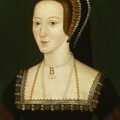
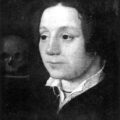
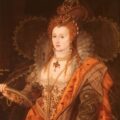
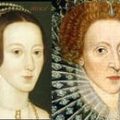
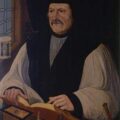
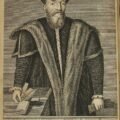
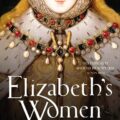
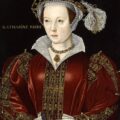
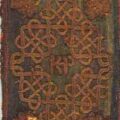
Sounds like a fascinating book; I’ve always been interested in Kat Ashley but I have to point out that she was not Elizabeth’s only mother figure.
Blanche Parry came into her household as a cradle-rocker for the baby princess whilst still very young herself. She outlived Kat Ashley, spent the whole of her long life with Elizabeth and was a close and trusted companion. She also taught Elizabeth Welsh! She was a relation of William Cecil, himself being of Welsh descent, and was very well-thought of at Elizabeth’s court. For some reason, Kat Ashley catches all the attention, perhaps because of her imprisonment and involvement in the Seymour affair.
Wow! Thanks so much for posting Ms. Harper! I simply love your writing and can not wait to read your next book. I look forward to learning more about Kat Ashley through your interpretation.
Hi Ceri,
Elizabeth Files visitor, Rochie, wrote an article for us on Blanche Parry – see https://www.elizabethfiles.com/mistress-blanche/3117/ – and I agree with you about her being a mother figure for Elizabeth. I was glad that Tracy Borman, in her book “Elizabeth’s Women”, recognised the influence of Blanche Parry on Elizabeth because, like you, I feel that she is often neglected.
Thanks for the comment!
Sounds really interesting!
I haven’t yet heard of Blanche Parry but i’ll be sure to be doing some research now! I think that the idea of a book of Kat’s point of veiw is a really good idea, too – just finding a topic of a book that’s freash is hard. Believe me, i should know!
This is a welcome look at the life of a sometimes neglected and sometimes unjustly maligned figure. I do agree with Ceri C though, as well. The best biography on Blanche, by the way, is ‘Mistress Blanche – Queen Elizabeth I’s Confidante’ by Ruth E. Richardson. A bit dry, but it does give all the available facts.
Do you know where Kat is buried and did Elizabeth give her a “royal” funeral?
Her husband John was buried at All Saints in Maidstone but it is not known where Kat was buried, although it is likely to have been in London. I don’t know about her funeral, I’m afraid.
Can’t wait to read your book Karen and do some more research on Kat. I am so excited to know that she actually really excised. How amazing.
The funny thing is that tonight, quiet on a whim, I decided to ask google if Elizabeth 1 had a lady in waiting called Ashley. My gran had told me when I was a girl that Lady Ashley, Queen Elizabeth’s Lady in waiting, was a descendant and that’s why all the first born girls in the family were given the name Ashley. My mum was Edna May Ashley.
Unfortunately, my mum, being a thoroughly modern miss born in 1910 didn’t carry this tradition on to me which my grandmother was not too happy about evidently. Now I am starting to see why.
I am just fascinated that my gran’s tale could have led me to this.
Thank you for your research,
Cheryl Ann Osborne ne Monaghan
I’ve been researching the Tudor period and somehow found my way to this site, for which I am so grateful.
I just wanted to say that this is an extraordinary site in which you obviously have spent countless hours to the benefit of laymen and historians.
Thank you! I will be returning to your site again and again.